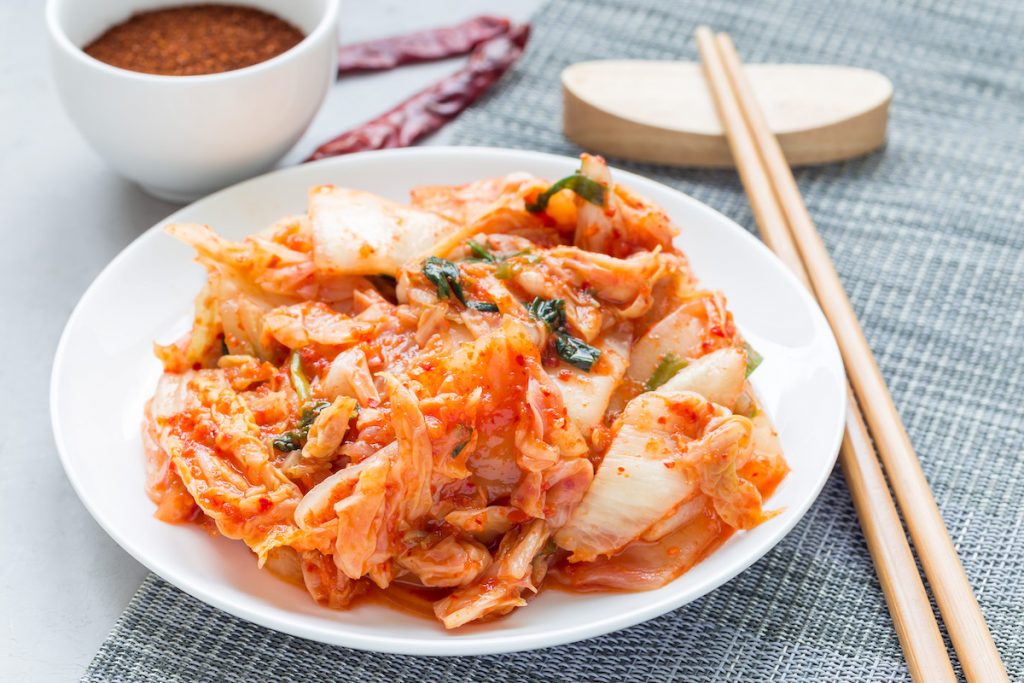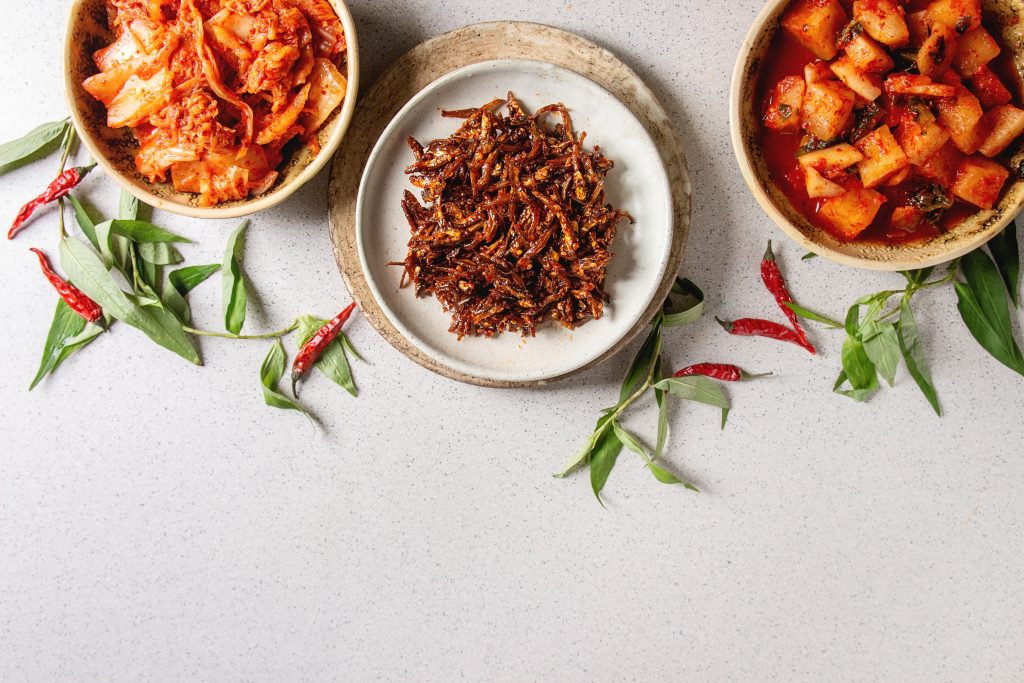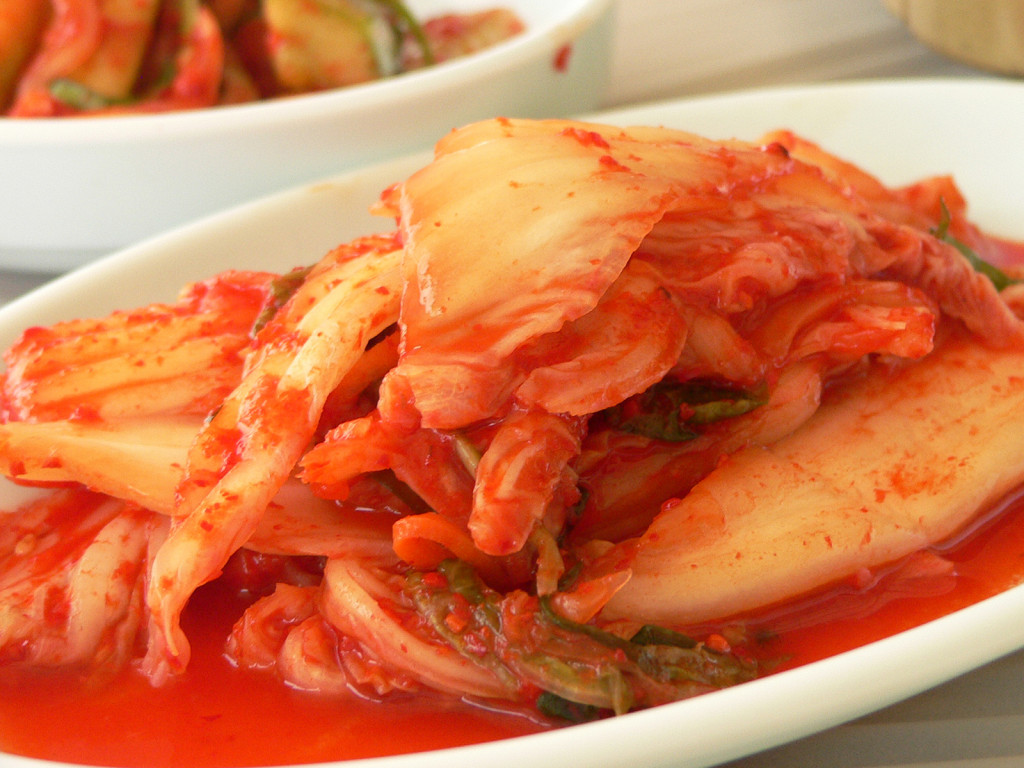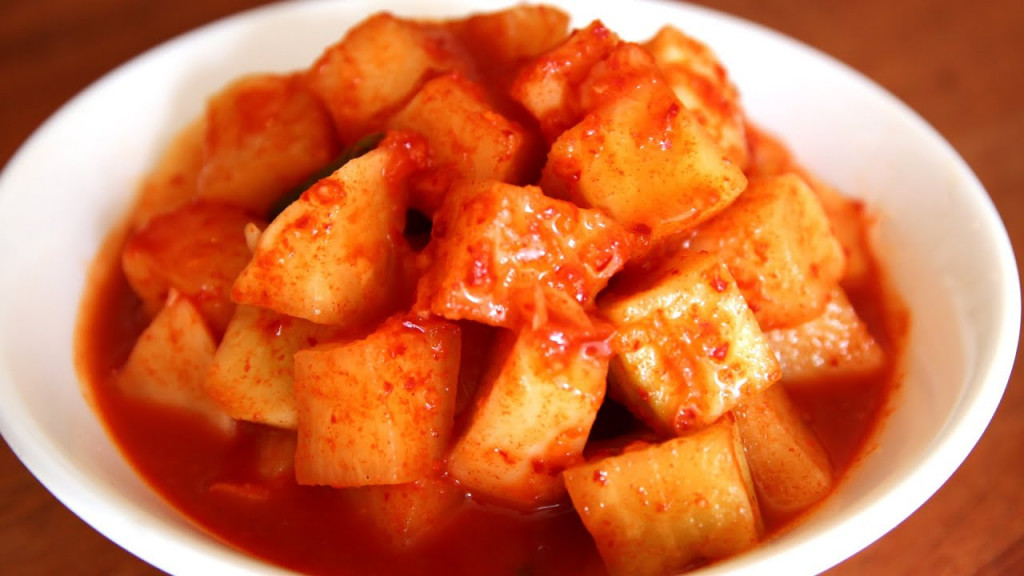Table of Contents
But First, What is Kimchi?
If you love Korean food, and you are still not aware of kimchi, you must be living under a rock, or not eating at the right places. Let us begin by learning the background and history of kimchi.

Feasting on Bibimbap, Kimchi and other traditional Korean food
Undoubtedly when ordering in a Korean restaurant, if not always, kimchi will be one of side many dishes that will come along with your main course.
Kimchi is a traditional side dish made out of salted and fermented vegetables.
Due to the process of fermentation, kimchi has a sour, spicy, and umami taste. Umami is the fifth taste of tastes. We know about sour, sweaty, salty, and bitter, but this is savoriness. Food like fish, ripe tomato, cheeses, and whine has an umami taste.
The key ingredient to this traditional delight is napa cabbage.
Fun fact, the history of kimchi starts back to 57 B.C.E.
Kimchi is now becoming more popular in other parts of the world, which gives it all the more reason for people to learn about the history of kimchi.
The History of Kimchi
It is impossible to exactly track down the history of kimchi.
The farthest record starts around the Three Kingdoms period (57 BCE – 668 CE), but others argue that kimchi dates farther back.
The early population of Koreans was going through a difficult time with agriculture during the winter.
The cold weather would prevent food from growing.

Kimchi cabbage.
As they continued to deal with the winter every year, Koreans were able to adapt and grow new skills.
To save food during the winter, they would dry their food, and also preserve their food with salt— creating kimchi.
Koreans store kimchi in large earthenwares (also known as Onggi) which they left underground to prevent freezing.
Do note, the first kimchi was not spicy nor was it made out of the cabbage. It was made out of radishes. Surprising right? Other vegetables and spices will come at a later time.
It is important to note that Korea was very isolated during the beginning, which explains why their recipes evolved as they came in contact with other countries.
Goryeo Period (918-1392)
During this period, researchers found the first written records of kimchi.
This also marks the beginning of Korean tradings with other kingdoms. This not only introduced new vegetations but spices.
Chinese tradings changed the kimchi recipe by introducing napa cabbage and garlic.
This change made kimchi similar to the sauerkraut.

Korean traditional fermented appetizer kimchi cabbage and radish salad, hot spicy anchovies fish snack in ceramic plates with Vietnamese oregano greens over grey spotted background. Flat lay, space.
Joseon Dynasty (1392-1910)
This period marks the influence of the Japanese people in Korea.
Throughout the many intents to conquer Korea, the Japanese introduced soy sauce impacting Korean cooking while also introducing another method to preserve kimchi.
Some researchers think that Japan helps the trade between China and Korea in this period. Koreans were able to get sweet potato and chili peppers from the Chinese.
The introduction of chili pepper created the kimchi we now know today. This on also embarked the makings of the many other kimchi recipes.
Other Types of Kimchi History Has Created
As stated before, kimchi comes in different types of shapes, forms, and flavors.
There are about 200 ways of making this side dish.
In the olden times, people would consume kimchi based on the season.
Here are some popular ones:
- Baechu Kimchi is one of the most popular and it is usually eaten with every meal. It is made out of napa (baechu) cabbage, red pepper powder, chopped garlic, ginger, and pickled seafood. You will see this in any KBBQ.

- Baek (White) Kimchi is for those who do not like spicy. Parents give this type of kimchi to their children. Baek is like baechu without the pepper powder, however, it does include chives, radishes, chestnuts, and fruit (like the Korean pear).

- KKakdugi (Radish cubes) Kimchi has the same ingredients as beachu, though the taste is more juicy, sweet, and crunchy. This is popular during the winter when napa cabbages are not in season.

- Nabak (Red Water) Kimchi is not that spicy. It is like a red cold soup with radishes, carrots, green onion, napa cabbage, garlic, ginger, brine Korean pear juice, and a tiny bit of red pepper.

- Yeolmu Mul (Green Water) Kimchi is best for those hot and humid summers. This kimchi has green chili peppers, red chili peppers, garlic, and kimchi sauce.

Health Benefits of Kimchi
Now, kimchi is so popular because it can deliciously pair with any meals. You can eat this with burgers, ramen, rice, egg, fish, and the list goes on and on.
And others like it for it sour umami taste, it reminds them of dill pickles or sauerkraut.
However, others do enjoy it for its health benefits.
Kimchi provides lots of probiotics detoxifying your body from any toxins, which boosts your immune system while strengthing your body to fight against infections.
Furthermore, the fiber in the kimchi help minimizes your chances of health complications. Some examples are diabetes, heart diseases, obesity, and digestion.
And if you are trying to lose weight, kimchi can reduce food cravings, and regulates your appetite.
Lastly, Kimchi is rich in vitamin A which can slow aging and repair old skin.
Kimchi is delicious and beneficial for your health. If you have not tried it yet, you are missing out.








